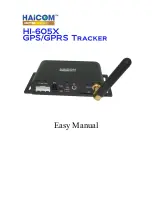
6
53:30:0 , 4 , "Truckers Restaurant La Bamba"
2.4. OV2 File Structure
TomTom Navigator POI files are stored in so−called OV2−format, and as a rule have the
filename−extension "ov2". This document provides some information about the content of such files.
Please note the following legal conditions:
(1) No information stored in OV2 format, or extracted from files in OV2
format (using whatever means, tools or techniques, based upon either
published or self−discovered knowledge about the OV2 format), nor
any knowledge about the OV2 format itself, may be
− sold in any form, unless with written permission from the owner
of the original (raw) information,
− used from within any application other than a TomTom product,
commercial or otherwise, without explicit written permission
from a director of either Palmtop BV or TomTom Inc, unless
(a) that application has the sole purpose of providing
additional functionality to TomTom Navigator or TomTom
Citymaps, and
(b) that application only functions on devices on which TomTom
Navigator or TomTom Citymaps is installed, and
(c) that application is accompanied by a warning similar to
this warning.
(2) Furthermore,
− we will not provide support about the format, or any related
tools or documentation,
− we do not guarantee correctness or completeness of the either
the format, the tools or the documentation,
− we hold the right to change or extend the format without notice,
− we do not guarantee that details of future, changed or extended
formats will be made available,
− we do not guarantee that future, changed or extended formats will
be compatible with the current format,
− we do not promise that we will allow the same things for future,
changed or extended formats.
(3) Finally, please note that
− the POI data that is distributed as part of TomTom products is
(a) not in OV2 format, (b) expressly not allowed to be accessed
in any way whatsoever, and (c) protected by international
copyright laws.
An OV2 file consists of a sequence of variable−length records. Every record starts with a one−byte
"type". This type tells you how to process the rest of the record.
You should not encounter types other than 0, 1, 2 and 3 − if you do, the file is either corrupt or in a
different (e.g. a higher−version) format.
Coordinates are stored as 4−byte integers representing a WGS84 longitude or latitude, multiplied by
100,000 and rounded to the nearest integer. As such, an X−coordinate should always be a value between
−18,000,000 and +18,000,000, and a Y−coordinate should be a value between −9,000,000 and +9,000,000.
DELETED RECORD:
1 byte T: type (always 0)
2. Providing your own Points of Interest to TomTom Navigator










































